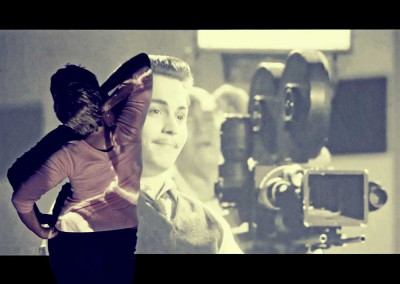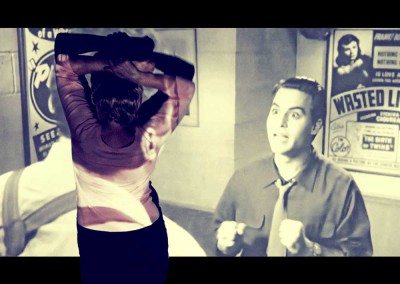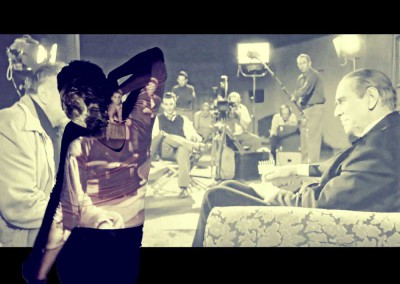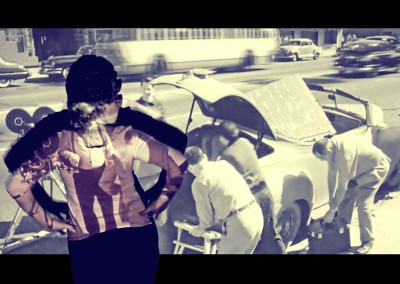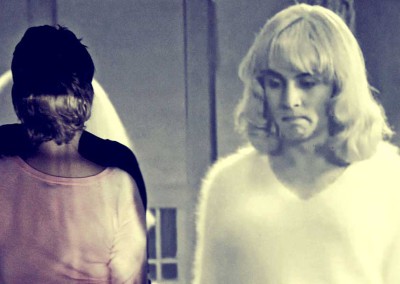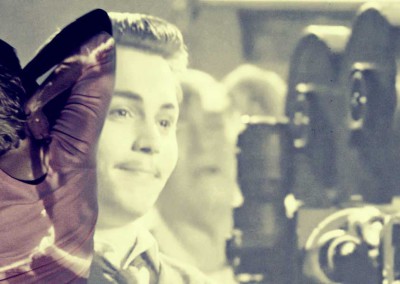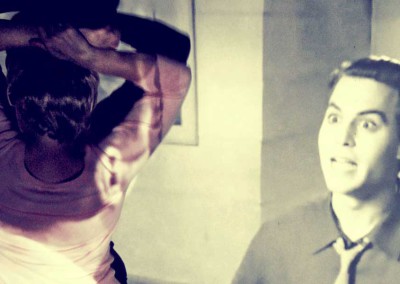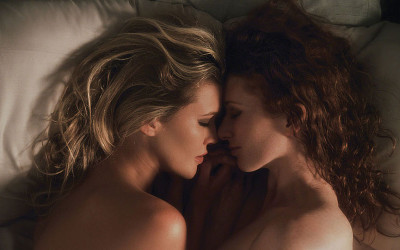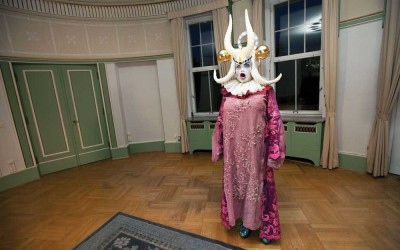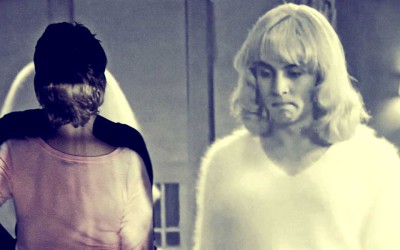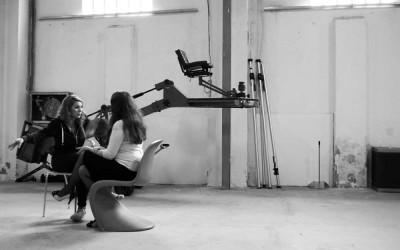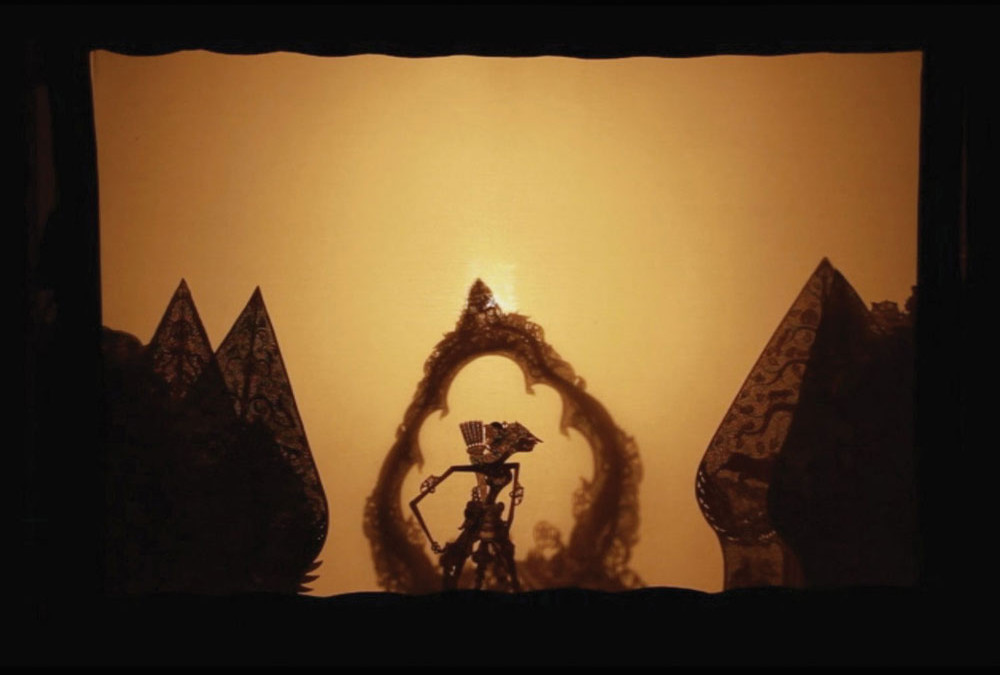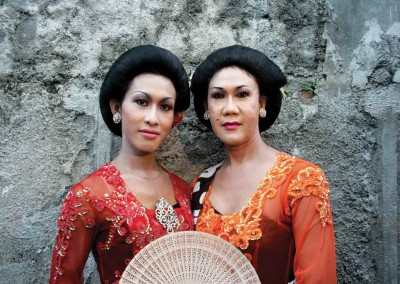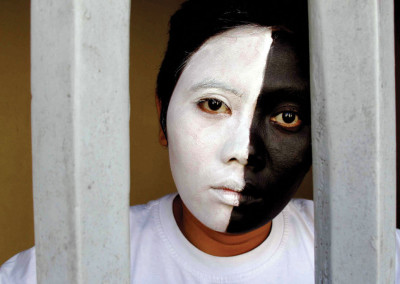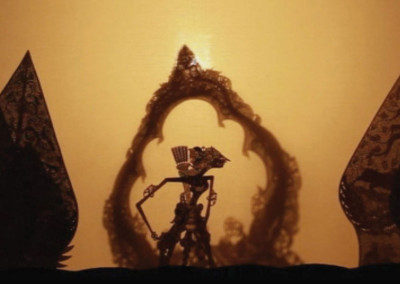The Trans*Tapes is a series of six short portraits about transgender people in the Netherlands, made by three transmen; Bart Peters, Jonah Lamers and Chris Rijksen. Released in 2015, The Trans*Tapes focus on strength, positivity and…..
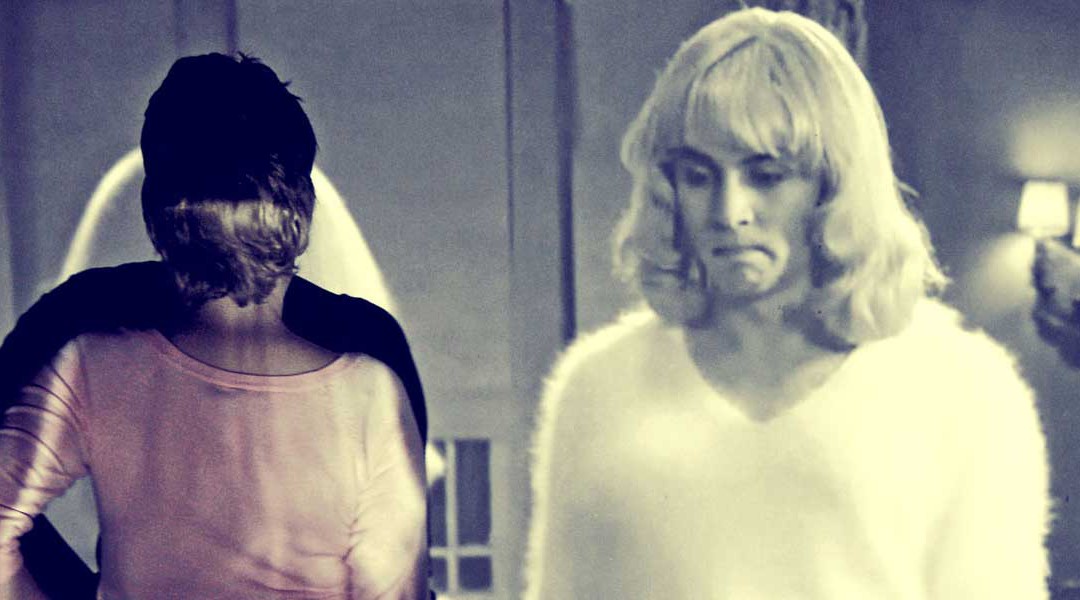
Ed Wood
Ed Wood
Text Susan MacDonald
Since the biopic ‘Ed Wood’ starring Johnny Depp, the for nearly two decades forgotten eccentric of the 1950s, Edward D. Wood Jr. enjoyed a success that quite escaped him in life. His technically inept, but oddly fascinating films are shown at midnight screenings in off-beat picture theatres around the world.
This revival is largely due to his being presented to a new audience by Michael Medved’s 1981 book The Golden Turkey Awards, a volume which attempted to satirise the Academy awards by presenting nominations and awards for lack of quality. In a Ben Hur-like performance, Ed Wood won both the award for the worst director of all time and the award for the worst film of all time, which was given to his magnum opus, Plan 9 from Outer Space. Ed Wood had his own troupe of players: a bizarre entourage of friends which included the flamboyant newspaper and television seer Criswell, blond cowlick spit-stuck to his forehead, whose dramatic future predictions were nearly always wrong. (“I predict that in 1980 public executions will be shown on television, sponsored by your local gas company!”) Criswell (his full name was Jerome King Criswell ) lived his childhood at the rear of his father’s mortuary business, and for the rest of his life he preferred sleeping in satin-lined coffins, because he found them so comfortable (as one Ed Wood acquaintance commented, “Where does Ed find them?”) Another famous member was the Gothic spider-woman Vampira (Maila Nurmi), whose raven-black hair, dark make-up, and bloodless pallor marked her as the heiress to a tradition going back to the early Victorian age, through the female vampires in Dracula, the silent film temptress Theda Bara, Morticia Addams of the New Yorker’s cartoons, and the villainesses of a thousand forgotten radio and Saturday matinee serials. Even Natasha, from the Rocky and Bullwinkle cartoon series, is a parody of this interesting genre and bears an especially striking resemblance to Vampira. In the early 1950s she was a late night horror film hostess in Los Angeles, with an enormous cult following throughout America, and her own sub-retinue of flunkies and minders. Just before his untimely death James Dean had been having a love affair with her.
With the popularity of the Goth look in more recent times, Vampira was forty years ahead of her time. John Breckenridge (“Bunny”) was the scion of a wealthy European family. He was transsexual and dreamed of having a ‘Christine Jorgensen’ procedure to change his gender. For several years he was an acquaintance of Ed Wood’s but made one film appearance only, as the alien Ruler in Plan 9 from Outer Space. It is a performance of such outrageous and hilarious world-weary camp that one regrets he did not appear in more movies. There were others: Loretta King, who could not drink any liquids because she was “allergic to water”, the growling Swedish professional wrestler Tor Johnson, hack actors Paul Marco and Conrad Brooks (the latter is nicknamed by enthusiasts “the John Geilgud of bad movies”), and Bela Lugosi, who had starred in Dracula in 1931, but who was now forgotten, depressed, and a narcotics addict. Ed Wood gave Bela Lugosi something to live for again. The two became friends, and Bela was overjoyed to be making films once more, and with a much more interesting crew than he had ever known at the major studios. And there was another interesting sidelight to Ed Wood’s film career. He was a very public cross-dresser. This would be unusual today, but in the 1950s it was unique. There were female impersonators of course, but Ed was a genuine transvestite. He found women’s clothes and their soft fabrics sexually enticing, and extremely relaxing. If there was stress on the film set – and there often is – he would disappear, and return wearing a wig, a skirt, nylon stockings, and a fluffy sweater and beret knitted from angora, his favourite fibre.
Of course the members of his outlandish menagerie were not put off by this at all. In order to raise money for his pictures however, Ed had to deal with the wider world too. He confronted a great deal of misunderstanding and prejudice, and one of his films, Glen or Glenda (1953), is partly a documentary explained by a psychiatrist and overseen by a kind of Science God played by Bela Lugosi. It’s also partly a fictional story of courtship, with the purpose to help people understand and empathise with the phenomenon of cross-dressing. Ed Wood even played the lead role himself. He wanted there to be no doubt in the minds of the audience that the difficulties the hero encountered were based on personal experience. It was probably the most courageous film of the 1950s, and still remains the only main stream movie about genuine transvestism from any English-speaking country. As Ed Wood himself explained, “If you want to know me, see Glen or Glenda, that’s me, that’s my story. No question. But Plan 9 from Outer Space is my pride and joy.” But, for the business that hired Ed, Glen or Glenda was meant to be a sensationalist work of mild pornography. When the producer saw it, he was furious.
Three years later Ed Wood made the movie which discriminating film scholars regard as the pinnacle of his career: Plan 9 from Outer Space (shot in 1956, it was not released until 1959). The film was financed by the Baptist Church of Beverley Hills. Ed had convinced them that they should finance a film with the teenage appeal of the time, and that this film would then generate the money needed to make twelve films about the apostles of Christ – which were the movies that the Baptist Church of Beverley Hills really wanted to make. The cast included the best collection of Wood regulars that he ever assembled. The credits music, which develops into a theme as the film progresses, was Alexandr Mossolov’s Iron Foundry, a brilliant choice, full of menace and foreboding. The web site listed below states, “Iron Foundry enjoys an oddity reputation, and is rarely heard. Recordings have been few and far between.” Ed Wood was a classical music enthusiast, and any aficionado of Plan 9 would recognise the music at once.
‘Ed Wood won both the award for the worst director of all time and the award for the worst film of all time.’
It might be of interest to compare the real Ed Wood ‘stock company’ with the modern actors who portrayed them. Documentaries were made about Ed Wood’s life and career: Look Back in Angora, Flying Saucers over Hollywood, and one biography, Nightmare of Ecstasy. There has even been a rock video in the Ed Wood manner. But the zenith of the renewed interest in Ed Wood’s films was the superb biopic released in 1994, Ed Wood, directed by Tim Burton. It is an affectionate homage of notable accuracy, and was probably the best film made in the 1990s. At the time of writing, it is certainly the last great film made in gleaming black and white – a decision which Tim Burton fought hard for, but which was exactly right. Unfortunately, the use of black and white harmed the film at the box office. It made little money, because these days young filmgoers especially do not understand that black and white cinema has its own special beauty. But film critics and film magazines gave it the highest praise. It is a bitter-sweet fact that, even accounting for inflation, any fifteen minutes of Tim Burton’s film cost more to make than all the films Ed Wood made over a period of 25 years.
The casting of the film is exemplary. Lisa Marie is amazingly good as Vampira, and Jeffrey Jones is wonderful as Criswell. He brings a skein of warm comedy to the role which the real Criswell lacked. Johnny Depp in the title role projects Wood’s infectious enthusiasm and joi-de-vivre, and Bill Murray has fun as Bunny Breckenridge, although no mere actor could adequately display the real Bunny’s jaded, droll, contrived ennui. Martin Landau, such a wooden actor in so many films, won a well-deserved Oscar for his brilliant portrayal of Bela Lugosi in his final years. Edward D. Wood was unique. Is there any explanation for his strange life? Tim Burton, the director of the 1994 film, concluded that Ed had wanted to be a film producer and director ever since he was given a movie camera as a boy, and was bewitched from that moment on. When he was 17 years old, probably the most impressionable age in a person’s life, he saw Citizen Kane, when it was first released. (Ed was born October 10, 1924.) The youthful Ed Wood wanted to make films. But his idea of a film director was a cartoon idea. In cartoons the director habitually wears jodhpurs, shiny black boots, and carries a horsewhip. He sits in a simple canvas-backed chair, and shouts directions from an old-fashioned megaphone. He is frequently portrayed with a pencil-thin moustache, and sporting a beret.
While making his films Ed always used the megaphone, even though directors at the major studios had long abandoned its use. He never went for the jodhpurs or boots, or the horsewhip, but such affectations predated his memory: they had vanished at the end of the silent era (the earliest directors dressed this way as a protection against snakes and scorpions – in the silent days, films were usually shot on outdoor locations, and often in the desert). Tim Burton believes that this is the key to understanding Ed Wood’s style. Ed was in love with the idea of directing films…the romance, the persona of the admired but unpredictable martinet, and the artistic adventure. He enjoyed sitting in the canvas-backed chair, and shouting “Cut!” He wanted nothing to do with the tedious side of film directing: the careful attention to continuity (in his own films characters can drive away from a house in broad daylight and, after a trip of a mile or so, arrive in pitch-black, foggy night), the re-shooting of scenes in which bits of set protruded, or even fell over, the repetitive rehearsal of important scenes with the actors. In Ed’s films it was one take, or two at the most. He couldn’t wait to get on to the next scene, and play director again. The best answer to those who have nothing to offer the Ed Wood renaissance except derisive laughter, is the films themselves. Ed did try to get a job with the major studios, but none of them were interested. Anybody else would have gone home and taken a clerical job, but Ed went ahead and made his own films . . . shoestring budgets, fantastically strange actors, and technically inept . . . but they were made, and released.
And that was much harder to achieve fifty years ago than it is today. The major studios have lost their iron grip on Hollywood. Amazing sets and technical effects are just a software package away, and just about everybody in cinema boastfully announces themselves as an “independent”. One can glimpse behind those films a special mind of dark, surreal mysteries and obsessions. After all, there were other ultra-cheap directors in the 1950s and 1960s, but their films are about as interesting as the people next door’s home movies. In death, Ed Wood found the intellectual acclaim which had so painfully eluded him while he was alive and working. All of the chief members of his repertory are now dead, with the exception of Vampira. Maila Nurmi used to run a business preparing signed gravestone rubbings of Hollywood stars, but today she has time for little else except attending Ed Wood film festivals and special screenings. She speaks with heartfelt admiration of Ed’s kindness, and his brightening the last years of Bela Lugosi’s life, when the rest of Hollywood had turned their backs on him. Ed Wood died on December 10, 1978. He was not only kind; he was one of a kind.
Main Films
Glen or Glenda 1953
Jailbait 1954
Bride of the Monster 1955 (Bela Lugosi’s last film)
Plan 9 from Outer Space 1956
Final Curtain 1957
Night of the Ghouls 1958
This film was lost until 1983, because Ed Wood never had the money to pay the film developer’s bill. Finally recovered and released when the Ed Wood renaissance was well under way, it was immediately acclaimed an ‘Ed Wood masterpiece.’
The Sinister Urge 1960
Orgy of the Dead 1965
Take it out in Trade 1970
Related articles
The Trans*Tapes
Satyricon Beta
“I’ve promised you the story of my adventures for a long time. Today I’m finally going to keep my word. My unhealthy curiosity and my depraved imagination are the true product of Roman immorality, which is the basis of your education.” These…..
Wonderkid
There are 5000 footballers in the UK and not one of them is openly gay. Clubs prevent players from coming out because of an elegit increasing commercial market value, which may be damaging to both the sport as to its players. Not only…..
Rolla Selbak
Up till now she has made 2 feature films, a bunch of short films, a music video and 2 seasons of ‘Kiss her I’m famous’. The Spreecast ‘Grrls guide to filmmaking’ in which she interviews female movie directors, turned into a docu series and…..
Marina Rice Bader
Executive Producer of the lesbian themed movies ‘Elena Undone’ and ‘A Perfect Ending’, Marina Rice Bader, is releasing her feature length directorial debut ‘Anatomy of a Love Seen’ as a streaming rental, breaking outside of and bypassing the traditional…..
One Zero One
One Zero One is Tim Lienhard’s first independent feature film starring Cybersissy and BayBjane. This 90-minutes long documen-tale tells a true story about a most unique friendship, about survival at the edge of society and about the final…..
Live Nude Dancing
Live Nude Dancing is a collaboration between photographer Daniel Trese, choreographer Ryan Heffington and animator Johnny Woods. Commissioned by MOCAtv. The film is based on a piece from Heffington’s critically acclaimed show KTCHN that…..
Ed Wood
Since the biopic ‘Ed Wood’ starring Johnny Depp, the for nearly two decades forgotten eccentric of the 1950s, Edward D. Wood Jr. enjoyed a success that quite escaped him in life. His technically inept, but oddly fascinating films are shown at…..
Erika Lust
Someone once told her that she must be the cutest porn director he ever met. She thought that was a good thing, because most people still think you have to be a freak to make this kind of movies. We’re in Barcelona, in a huge loft. During lunchtime…..
Children of Srikandi
Children of Srikandi is the first film about queer women in Indonesia, the country with the worlds largest Muslim population. Eight authentic and poetic stories are interwoven with beautiful shadow theater scenes that tell the story of…..

